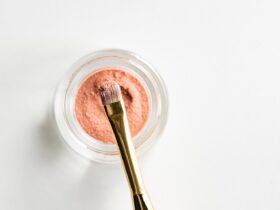The perfume atomizer, a ubiquitous accessory gracing dressing tables and handbags worldwide, represents far more than just a convenient means of dispensing fragrance. It’s a testament to human ingenuity, a marriage of artistry and technology that has evolved dramatically over centuries. Its story is one interwoven with the history of perfumery itself, reflecting changing social customs, evolving aesthetic sensibilities, and the relentless pursuit of innovation.
Early Beginnings: Beyond the Simple Bottle
Before the advent of the atomizer, perfumes were typically stored in solid or semi-solid forms (pomanders, pastilles) or in simple stoppered bottles. Application was a less than delicate affair, often involving dabbing, smearing, or even splashing. The desire for a more refined and controlled method of distributing fragrance spurred early experimentation. One of the earliest precursors to the atomizer can be traced back to ancient Egypt, where rudimentary atomizing devices, using reeds and hollowed-out vessels, were employed to disperse incense and aromatic oils during religious ceremonies.
During the Renaissance, perfumery experienced a significant revival. Highly ornate and decorative bottles became symbols of wealth and status. However, the method of application remained largely unchanged, relying on stoppers and manual application. It wasn’t until the 18th and 19th centuries that true atomizer technology began to take shape.
The Evolution of Atomization: From Sprayers to Bulbs
The late 18th century witnessed the development of basic spraying mechanisms, often using bulb-shaped containers and rudimentary pumps. These early atomizers were primarily used for medicinal purposes, dispersing liquids for inhalation therapy. However, the potential for applying fragrance was quickly recognized.
The 19th century saw significant advancements in atomizer technology. One of the key innovations was the introduction of the glass bulb atomizer, often adorned with intricate metal filigree and tassels. These atomizers, also known as “poire à parfum” (pear-shaped perfume bottle), used a rubber bulb to create air pressure, forcing the perfume through a nozzle and creating a fine mist. These were particularly popular during the Victorian era, aligning with the period’s emphasis on delicate and refined aesthetics.

(Image: A collection of vintage perfume atomizers, showcasing the craftsmanship and artistry of the era.)
The bulb atomizer became a fashion statement, reflecting the opulence and elegance of the time. Companies like DeVilbiss, which initially focused on medical atomizers, expanded into the perfume market, creating elaborate and highly sought-after designs. These atomizers were not merely functional; they were works of art, often incorporating precious metals, enamel work, and intricate glassblowing techniques.
The Rise of the Pump Atomizer: Modern Convenience
While the bulb atomizer held sway for several decades, it had inherent drawbacks. The rubber bulb was prone to degradation, and the spraying mechanism could be unreliable. The 20th century ushered in the era of the pump atomizer, a more durable and efficient design that revolutionized perfume application.
The pump atomizer utilizes a small pump mechanism, often incorporated into the cap of the bottle. When the user presses down on the actuator, the pump draws perfume from the bottle through a dip tube and forces it through a fine nozzle, creating a consistent and controlled spray. This design offered several advantages over the bulb atomizer: it was more durable, easier to use, and less prone to leakage.
One of the pioneers in the development of the modern pump atomizer was Marcel Bich, the founder of Bic. Though primarily known for his ballpoint pens, Bich recognized the potential of a reliable and affordable atomizer. His innovations in plastic molding and engineering paved the way for mass-produced pump atomizers, making perfume more accessible to a wider audience.
Materials and Aesthetics: A Reflection of the Times
Throughout the history of the perfume atomizer, the materials used in their construction have reflected the prevailing trends and technological advancements of the time. Early atomizers featured glass, metal (often silver or gold plated), and rubber. As plastics became more prevalent, they were incorporated into atomizer designs, offering greater affordability and durability. The aesthetics of atomizers have also evolved, mirroring changing tastes and fashion trends. From the ornate and elaborate designs of the Victorian era to the sleek and minimalist styles of the modern age, the perfume atomizer has consistently adapted to the zeitgeist.
The Atomizer Today: Technology and Sustainability
Today, the perfume atomizer continues to evolve. Manufacturers are constantly innovating, developing new nozzle designs that create finer and more consistent sprays. There is also a growing emphasis on sustainability, with companies exploring the use of recycled materials and refillable atomizer systems. The rise of travel-sized atomizers has further popularized the concept of portable fragrance, allowing individuals to carry their favorite scents with them wherever they go. The industry is also seeing the use of advanced materials, such as titanium and specialized polymers, for improved durability and performance.
The evolution of the perfume atomizer showcases the remarkable interplay between functionality, artistry, and technological progress. From its humble beginnings as a rudimentary spraying device to its current status as a sophisticated and indispensable accessory, the atomizer has played a pivotal role in the history of perfumery.
Schlussfolgerung
The journey of the perfume atomizer is a fascinating one, spanning centuries and cultures. From the rudimentary devices of ancient civilizations to the sleek and sophisticated sprayers of today, the atomizer has undergone a remarkable transformation. It is a testament to human ingenuity and the enduring desire for a more refined and convenient way to experience fragrance. As technology continues to advance and sustainability becomes an increasingly important consideration, the perfume atomizer is poised for further innovation, ensuring its continued relevance in the world of perfumery for generations to come.
Häufig gestellte Fragen (FAQs)
What is the main purpose of a perfume atomizer?
The primary purpose of a perfume atomizer is to disperse fragrance in a fine mist, allowing for a more controlled and even application compared to traditional methods like dabbing.
How does a pump atomizer work?
A pump atomizer works by using a small pump mechanism activated when the user presses down on the actuator. This pump draws perfume from the bottle through a dip tube and forces it through a fine nozzle, creating a spray.
What were some of the early materials used in perfume atomizers?
Early perfume atomizers were commonly made from materials such as glass, metal (often silver or gold plated), and rubber (for the bulb mechanism).
What is a “poire à parfum”?
“Poire à parfum” is a French term referring to a pear-shaped perfume bottle with a bulb atomizer, popular during the Victorian era.
Are there sustainable options for perfume atomizers?
Yes, there is a growing trend towards sustainable options, including atomizers made from recycled materials and refillable atomizer systems.
















Eine Antwort hinterlassen